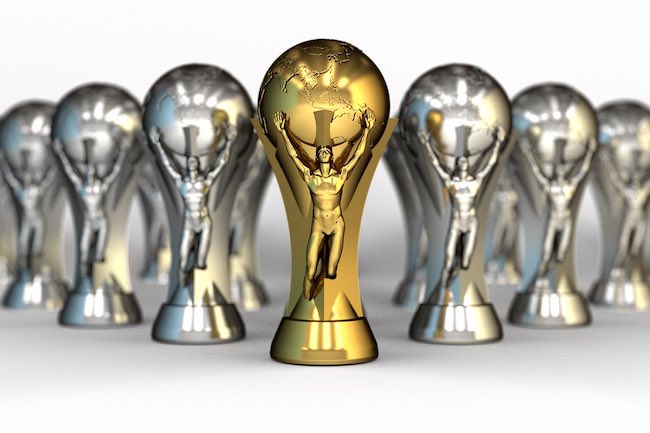When the KC Current announced the construction of the first-ever stadium built exclusively for a women’s team, I was ecstatic. Like so many fans of women’s soccer, I was thrilled to see female athletes finally getting the respect and investment their craft deserved. I even signed my name on one of the beams used to build the stadium. It felt monumental, and it was happening right here in Kansas City—a city I had recently made my home. I read every article I could about the stadium’s location, the Longs—the couple financing this incredible endeavor—and how to become a season ticket holder. I wanted to be part of history. I wanted to believe in the dream they were selling.
But that was before reality set in. Not long after the announcement, I learned the stadium would only hold 11,500 seats. My gut told me it was too small. Many NWSL games, including some KC Current games at Children’s Mercy Park, had already surpassed that capacity. I knew the sport was growing rapidly, especially in a soccer-loving city like Kansas City, known for its BBQ, die-hard sports culture, and sprawling soccer fields. I even wrote a blog expressing my concerns about the stadium’s size. I wanted to believe that those in charge knew what they were doing. I wanted to believe it was about growing the game.
Fans are Being Squeezed Out
Fast forward to today, and I’ve come to see what this “historic” stadium really represents. On the surface, the KC Current’s owners are lauded as pioneers and heroes of the sport. But the reality for fans like me is quite different. While the world cheers, those of us who supported this team from the beginning are being squeezed out. First, let’s talk about the move from Children’s Mercy Park. Ticket prices there were reasonable. We could trade our seats for group tickets to bring friends or move around the stadium if we wanted a different view. We had dedicated reps to talk to and free parking that made tailgating a cherished part of the game-day experience. My family would arrive hours early, bringing food, games, and music. It wasn’t just soccer—it was a community.
Enter CPKC Stadium. To start, we were locked into our seats, making it nearly impossible to change or accommodate friends. Our season tickets saw a price hike, which, while somewhat understandable given the new stadium, was only the beginning. What really blindsided us was the $800 parking fee, revealed only weeks before the opening game—well after we’d already committed to season tickets. The only alternative was to be bused in on school buses from miles away, as areas around stadium wasn’t walkable from public parking. Feeling duped, we paid up, only to learn that tailgating—one of our favorite traditions—was now banned. And the parking lot? Dirt.
It didn’t stop there. Food and drink prices inside the stadium were nearly double what they’d been before. No more season ticket discounts. Every aspect felt like a money grab, from start to finish. Then came the kicker: an announcement that the only parking lot we’d paid a small fortune for would eventually be replaced with shops and apartments. This means that in the future, we’ll likely have to wait in long lines for buses just to get to our cars. The message was clear: this wasn’t about creating a great fan experience. It was about squeezing every last dollar out of those who’d supported the team all along.
Selling Tickets to the Highest Bidder
I wanted to be proud of this new stadium. I wanted to believe it was about growing the game, about making women’s soccer more visible and respected. But as the KC Current prepares to host the NWSL championship game, I can’t help but feel bitter. While the world celebrates and praises the owners, those of us who’ve supported this team for years know the truth. This stadium was built small on purpose—not to grow the sport, but to create demand. It’s about selling tickets to the highest bidder, pricing out loyal fans, and making games less accessible.
The championship game could have drawn a crowd of 30,000 or more. But instead, we’re capped at 11,500 seats. How does this grow the sport? How does this keep women’s soccer accessible to the fans who’ve been there from the beginning? The truth is, it doesn’t.
While others cheer, I’ll be remembering the countless ways fans have been priced out, disappointed, and treated as afterthoughts. It’s a shame that what should have been a moment of pride has become a painful reminder that money often wins out over the true spirit of the game. For me and so many other loyal fans, it feels like only a matter of time before we’re completely priced out.




